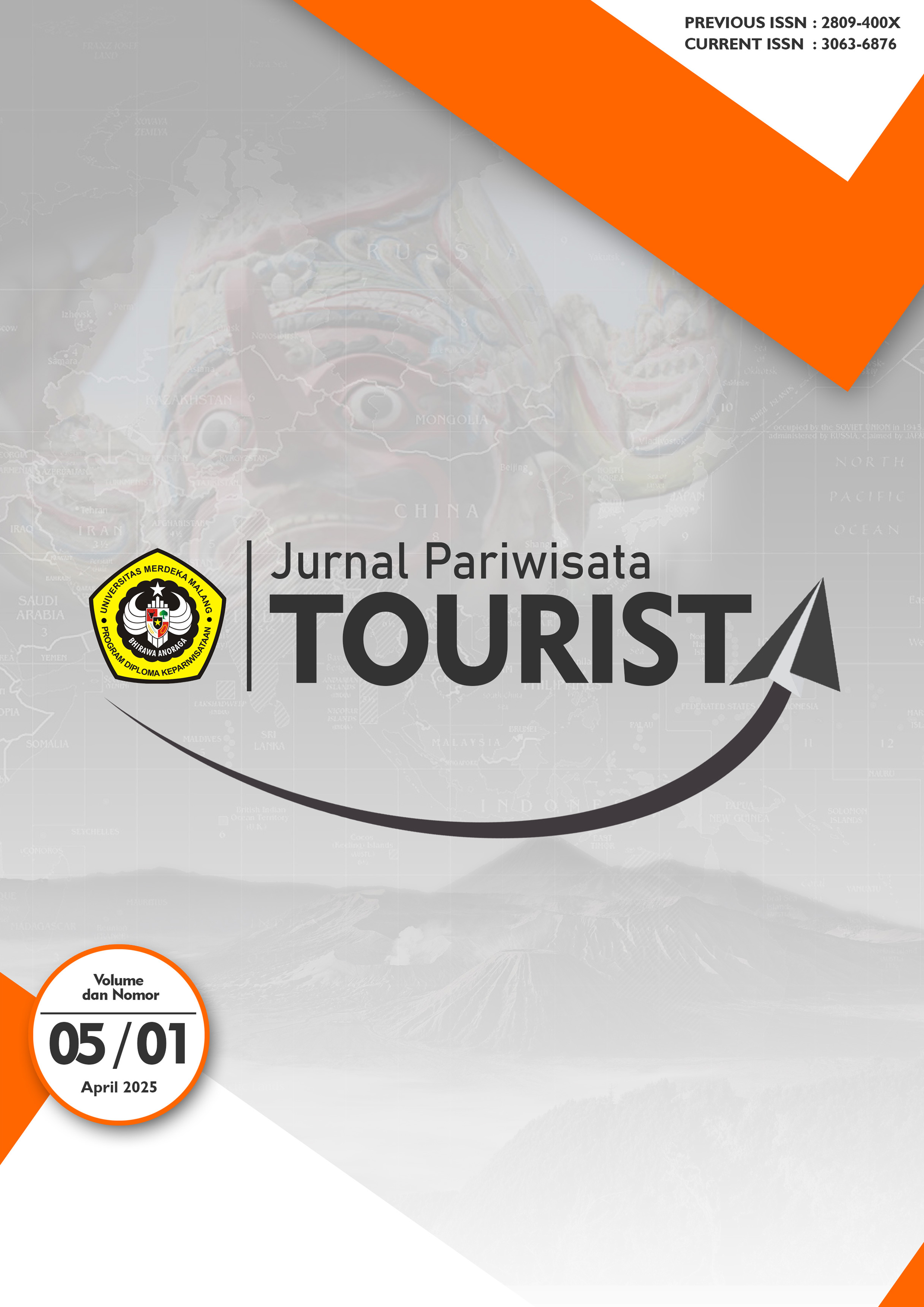Analysis of food and beverage sanitation hygiene through standard operational procedure as an effort to prevent food contamination (case study at melting Pot Cafe, Concorde Hotel Kuala Lumpur)
DOI:
https://doi.org/10.26905/jt.v5i1.15495Keywords:
food and beverage, Standard Operational Procedure, Food ContaminationAbstract
Sanitary hygiene in the food processing process is one of, if not the most important aspect in preventing food contamination. Therefore, to prevent unwanted food contamination, hotels use Standard Operational Procedure as a daily operational guideline. Standard Operational Procedure is a guide used to ensure that the operational activities of an organization and/or company run smoothly. Therefore, sanitation hygiene and food contamination are closely related, with the Standard Operational Procedure as a guideline as well as a means of improving daily operations. This study aims to analyze the level of food and beverage sanitation hygiene to prevent food contamination through the implementation of standard operational procedures at Melting Pot Cafe, Concorde Hotel Kuala Lumpur. The method used in this research is a case study method using a descriptive approach. In this study, data was collected using direct observation techniques and questionnaires given to 30 staff who were directly involved in the food processing process. The results showed that there are several points that need to be improved in terms of food processing, resulting in a Standard Operational Procedure that is expected to improve daily hotel operations.
Downloads
References
Anam, M. M. U., Setioko, M. D., & Rahmadian, A. (2021). Penerapan Higiene, Sanitasi Dan Keselamatan Kerja Di Dapur. Jurnal Pengabdian Masyarakat Waradin, 1(2), 74-84.
Annie, Sailendra. (2015). Langkah-Langkah Praktis Membuat SOP. Cetakan Pertama. Yogyakarta : Trans Idea Publishing.
Aurora, S. A., & Setiawan, Y. (2021). Tinjauan Pelaksanaan Pencegahan Cross Contamination Bahan Pangan Di Dapur 18th The Trans Luxury Hotel Bandung. Jurnal Pariwisata Vokasi, 2(1), 42-52.
Bartono, P. H., & Ruffino, E. M. (2006). Dasar-Dasar Food Product. Yogyakarta: CV Andi Offset.
Firmansyah, A., Yuniati, N., & Wulandari, L. W. (2022). Peningkatan Angka Hunian Tamu Melalui Peningkatan Mutu Makanan Di Hotel Berbintang. ULIL ALBAB: Jurnal Ilmiah Multidisiplin, 1(5), 1395-1403.
Nani Rahmani, S. K. M., & Sarah Handayani, S. K. M. (2016). Kontaminasi Bakteri Eschericia Coli Pada Makanan Dan Minuman Penjual Jajanan Di Lingkungan Pendidikan Muhammadiyah Limau, Jakarta Selatan.
Ningrum, L. F., & Sulistyorini, L. (2019). Kondisi Sanitasi Peralatan Dan Higiene Bahan Minuman Terhadap Keberadaan Bakteri Eschericia Coli Pada Es Teh Di Warung Kelurahan Mulyorejo, Surabaya. The Indonesian Journal of Public Health, 14(2), 186.
Parantika, A., & Hurdawaty, R. (2018). Sanitasi, Hygiene, dan Keselamatan Kerja.
Triyani, I. (2020). Pengaruh Kualitas Produk Makanan Dan Hygiene Sanitasi Terhadap Kepuasan Tamu Di Anggrek Restaurant Grand Arkenso Park View Hotel Semarang. In Jurnal Visi Manajemen, 6(2), 117-123.
Rakhmawati, N., Hadi, W. (2015). Peranan Higiene Dan Sanitasi Dalam Proses Pengolahan Makanan Di Hotel Brongto Yogyakarta. Jurnal Khasanah Ilmu, Vol. VI No. 1, hlm. 79-87.
Sadiku, M. N., Ashaolu, T. J., & Musa, S. M. (2020). Food Contamination: A Primer. Int. J. Adv. Sci. Res. Eng, 6(03), 01-07.
Surono, I.S., Sudibyo, A., Waspodo, P.. (2016). Pengantar Keamanan Pangan Untuk Industri Pangan. Yogyakarta: Deepublish.
Downloads
Published
How to Cite
Issue
Section
License
Authors who submit manuscripts do so with the understanding that if accepted for publication, the copyright of the article will be submitted to the TESLA Journal: Hospitality, Travel Destinations and Travel as a journal publisher. Copyright includes the right to reproduce and submit articles in all forms and media, including reprints, photographs, microfilms, and other similar reproductions, and their translations.
The TESLA Journal: Hospitality, Travel Destinations and Tourist Travel and Editors strive to ensure that no false or misleading data, opinions, or statements are published in the journal. In any way, the contents of articles and advertisements published in the Travel Media journal are the sole and exclusive responsibility of each writer and advertiser.


